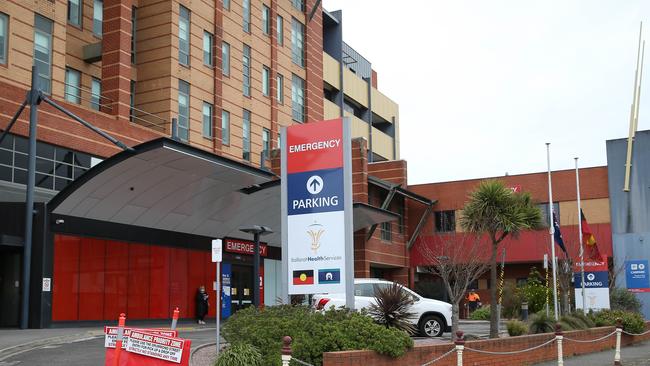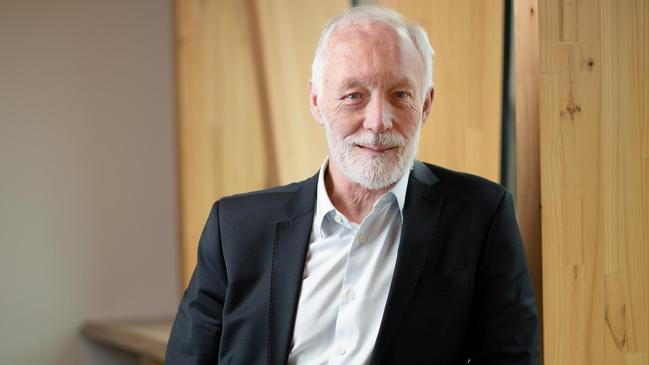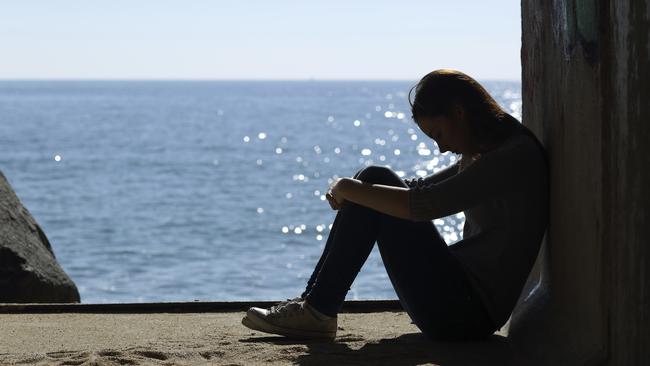Teen suicide tragedy amid youth mental health staffing crisis and child antidepressant use rise
A teenager took her own life after leaving Ballarat hospital, amid a youth mental health crisis and as the number of children on antidepressants rises.
Victoria
Don't miss out on the headlines from Victoria. Followed categories will be added to My News.
A suicidal teenager took her own life near Ballarat hospital after leaving in the middle of the night.
Leading Australian psychiatrist Patrick McGorry told the Herald Sun the 17-year-old girl had “constantly presented with suicidal risk” to the hospital’s emergency department and mental health team” but it was “a revolving door”.
“They didn’t know what to do with her basically. Most recently, it was in the middle of the night . . . and she killed herself basically across the road from the hospital – she’s dead at 17,” he said.
Prof McGorry – who is the head of Victorian youth mental health service Orygen, a Melbourne University youth mental health professor and former Australian of the Year – did not name the region or hospital involved.
However, the Herald Sun understands it was Ballarat Base – in a region where youth suicides have recently spiked – occurred on November 12 and police had earlier taken the teenager to the hospital after she had called Lifeline, which reported her distress.
Police said a report would be prepared for the coroner.
“Officers were responding to a welfare check when they located an unresponsive 17-year-old girl in the vicinity of Drummond St North about 1.40am,” a spokesman said.
“Police and paramedics treated the girl but she died at the scene. The death is not being treated as suspicious.”
A Coroner’s Court hearing will be held into the teen’s death.

A spokesman for Grampians Health, responsible for Ballarat Base, said it was unable to comment on individual cases but was committed to the safety and care of its patients.
Prof McGorry said the tragedy came as public youth mental health services, including Headspace, faced a “disastrous” staffing crisis after losing about a third of their workers to the better paid private sector.
For Headspace, this added to its existing treatment delay issues, where young people were typically waiting months for an appointment.
“At the very time the system needs to step up and expand and grow, it’s shrinking,” Prof McGorry said.
“You’ve got this big surge of need and a shrinking capacity to treat … at the state level there is money for workforce but recruitment and training has been neglected over the last few years, so we’ve got a huge shortage of staff there too.”
The Victorian government appeared genuinely committed to improving mental health services and resources in the state, but more needed to be done and quickly, he said.
The federal government has recently cut the number of subsidised mental health sessions available to Australians by half and help lines like Lifeline are overwhelmed with demand.
Prof McGorry said private psychologist, psychiatrist and GP waiting times had also blown out, leaving many young people in crisis with nowhere to turn.

Shocking data from the Australian Institute of Health and Welfare shows more than 114,000 primary school aged children between five to 11 were prescribed antidepressants in the 2020 to 2021 year, an increase of 10.6 per cent from 2016 to 2017.
Another 52,392 high school age children aged 12 to 17 were on antidepressants, up 12.2 per cent, while a massive 118,512 Australians aged 18 to 24 had also been given prescriptions.
Nationally, the number of Australians with access to one or more prescriptions for antidepressants has risen from 1,697,335 in 2017-18 year to 1,924,762 in 2020-21, with 849,954 of those Victorian.
More Victorians than people from any other state were on anxiolytics – drugs used to treat anxiety – with 254,231 prescriptions.
Prescription data from the 2021-2022 financial year will not be released until April but experts fear the numbers will have blown out further as the nation enters a mental health crisis.
At one private treatment centre inquiries about benzodiazepine – commonly prescribed for severe anxiety or insomnia – soared by 46 per cent last year, compared to 2021.
A Banyans Healthcare Group spokesman said inquiries for anxiety rose by 44 per cent in 2022 compared with 2021.
Australian Psychological Society president Catriona Davis-McCabe said Australians were “swimming against a rising tide of mental illness and disorders” and the federal government had “left them out at sea”.

“People’s mental health has been devastated during Covid, climate change and a cost of living crisis which continues to worsen yet the government has chosen to halve the mental health care subsidy for millions, against the advice of their own independent review panel,” Dr Davis-McCabe said.
“Our young people are facing the brunt of these effects and we risk a lost generation if we don’t act now. With the cutting of lifesaving services and no investment in reducing wait times for patients it’s not surprising that more people are turning to medication.”
Suicide Prevention Australia chief Nieves Murray said access to timely and affordable mental health treatment saved lives.
“If people can’t get timely access to help, there’s a risk that levels of distress in the community will grow,” she said.




